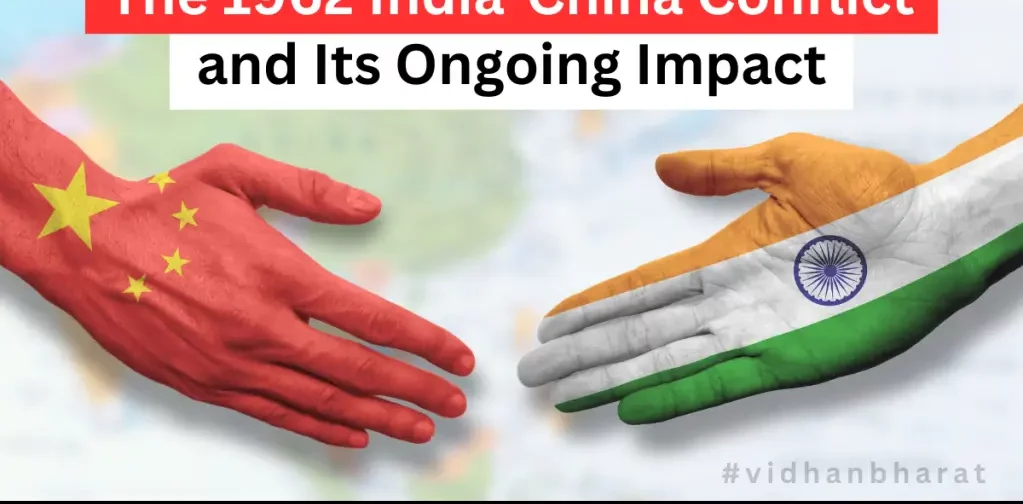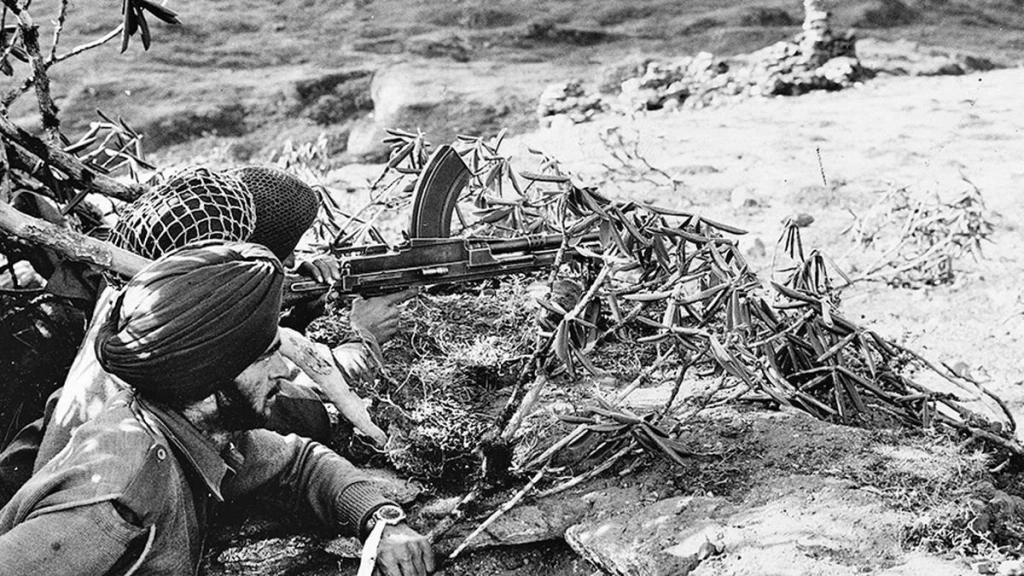
- Home
- About
- Knowledge Center
- Legislative Landscape
- Resources
- #TOGETHERFORBHARA
The India-China boundary issue remains unresolved 60 years after the 1962 war. Asia’s two great powers, also the world’s oldest civilizations, India and China, both once dominated by Europe but not subsumed, strive for economic and geopolitical dominance.
India attained its independence in 1947 and became a democratic nation. While China, on the other hand, leaned towards socialism. Considerably, India faced similar socio-economic, and political challenges as that of its counterpart in the mid-twentieth century. The socialist government of China in its pursuit of strategic borders crammed with India’s feeble approach towards the use of military interventions for settling boundary issues. Substantially, the beginning of India-China strife can be viewed as a conflict arising from three pertinent challenges: Tibet’s alliance with India, disagreement on territorial fronts – Aksai Chin (west of Nepal) and North Eastern Frontier Agency1 (present Arunachal Pradesh), strong Indo-Nepal alliance and to some extent India’s foreign policy as well.
Historically, China and India coexisted amicably before India’s independence mostly because they were distant neighbors, separated by the great Himalayas and Tibet. Nevertheless, the geographical proximity between China and Tibet was much higher and thus China invaded Tibet in 1951 through the Battle of Chamdo and annexed it to Chinese territory even amidst strong protests from Tibetan rebels.
With India sharing boundaries with Nepal, Bhutan, and Tibet in the North, “the ties between India and Tibet were spiritual bonds that go back almost two millennia which were essentially of a non-military and non-political character, albeit with nominal overland commerce”2. India enjoyed privileged involvement in Tibet pertaining to postal services, telecommunications, and well-maintained rest houses. Tibet was always a peaceful-friendly ally for India. All this while, in 1949, the Communist Party of China overturned the Nationalist government and established the People’s Republic of China (PRC) assuming political and territorial control. Significantly, India was the first among other nations to formally recognize the People’s Republic of China. Following this, the India-China diplomatic ties were established in the 1950s as the Nehru government believed that the India-China tie-up could benefit both the countries.
Although, the fact that there is no definite British Indian boundary line that was demarcated, from the northern sector to the eastern sector, Karakoram Pass and Demchok were the only two points recognized as Indian territory over the India-China boundary line. The controversial boundary line, a stretch of 3,488 km, has multiple regions strongly contested by both countries, as India accepts the W. H Johnson boundary line of 1865, on the contrary, China believes the McCartney-McDonald line of 1899 to be the actual line of control. To resolve the disputes, whenever the Britishers were asked for factual clarifications on border demarcation (as India and part of China were once under colonial rule of British), they deftly played the situation.

With new governments in place, in 1953 India requested deliberations over India-Tibet relations and to peacefully settle disputes over India-China border markings. Subsequently, in 1954, the Sino-Indian Agreement on Trade and Intercourse through Tibet, between China and India was signed which was founded on Panchsheel principles of
The aftermath portrays India as naive when it signed the 8-year trade agreement relinquishing privileges in Tibet and accepting Tibet as Chinese territory. In 1954, the first Premier of China, Mr. Chou En-lai’s visit to India showed their forethought of peaceful co-existence and later, the same year the then Prime Minister of India, Jawaharlal Nehru visited China to reaffirm this alliance. Persistently, there were multiple border encroachments from China in the following years until the year 1959 when Mr. Chou En-lai formally declined China’s acceptance of the McMahon Line3 (the actual line of control earlier acceptable to China and India).
Most controversially, Mr. B.N Mullick’s (Former Director, Intelligence Bureau (IB)), tactical move to set up IB posts along the Tibet border in 1959 coupled with his repulsive actions and support to the Tibetan rebellious refugees to protest Chinese aggression infuriated China to take extreme steps. After all was said and done, the first armed rebellion in the eastern sector was accorded on 25 August 1959. The Indian government’s decision to grant political asylum to the Dalai Lama during the Tibetan uprising of 1959 further escalated Chinese hostility. The border combat in 1962 caused a major setback in bilateral relations. Nehru’s forward policy in early 1962 to substantially get rid of the Chinese counterparts however without violence proved costly to India. China felt cornered by the unsettling relations with the US, India’s firm remations with Nepal and Bhutan, and emerging conflicts with the Soviet Union. The then Defence Minister V.K Krishna Menon’s bold statements regarding the government’s decision to force out Chinese from Indian-claimed land, further predated the Chinese government which ultimately resulted in the armed conflict leading to massive loss of life and property on both sides. On 20 November 1962, China proclaimed a unilateral cease-fire and announced its withdrawal to its pre-war position, to the China-India border (McMahon Line also known as the “Line of Actual Control ”).
In 1966, a committee was formed by Prime Minister Indira Gandhi, which decided that the day October 20th be observed as “National Solidarity Day” to honor the soldiers who died in the line of duty in the India-China War. Every year since then, National Solidarity Day has been held to honor the military services.
In 1976, China and India resumed diplomatic relations, and bilateral ties gradually strengthened. After, the armed rebellion, there were efforts to have an amicable understanding of the border issues, and the following agreements were entered into by both governments:
Still, the boundary issues have not been resolved and stand as an all time threat to step into a war with China. Even though the agreements were signed between both the countries to maintain the Status quo till an amicable resolution is derived there are reports of skirmishes on the Indian border every now and then. This brawl was the worst since June 2020, when the conflict in the Galwan Valley killed 20 Indian and at least four Chinese soldiers, marking a grave military confrontation between the two sides in decades. Another similar clash in January 2021 happened near the Indian state of Sikkim, between Bhutan and Nepal. All these incidents coupled with the EAM Dr. S Jaishankar’s statement that the relations between the two countries are abnormal, all point towards the border issue not being settled anytime soon.
